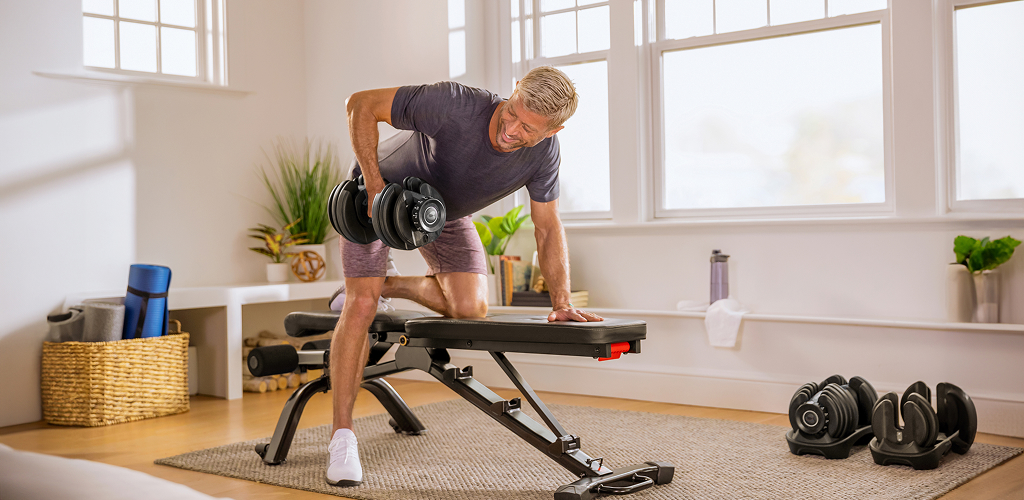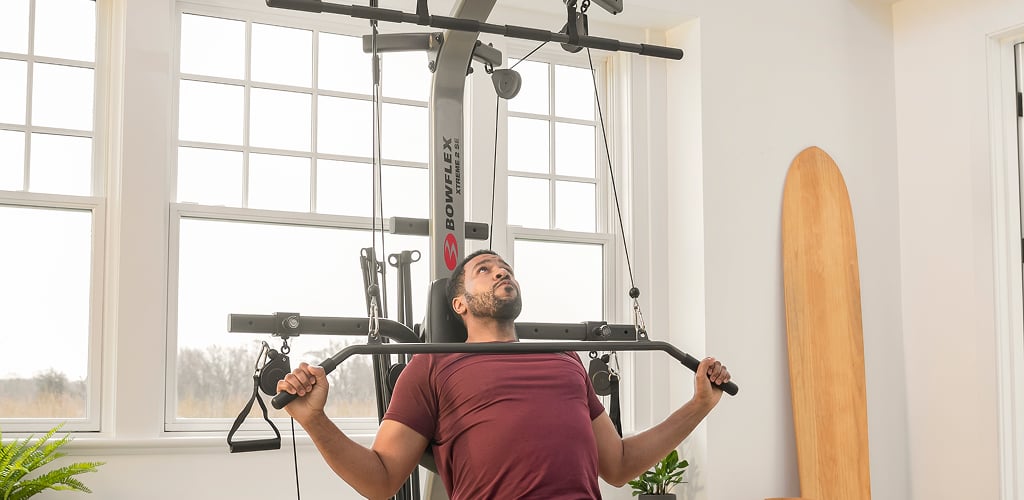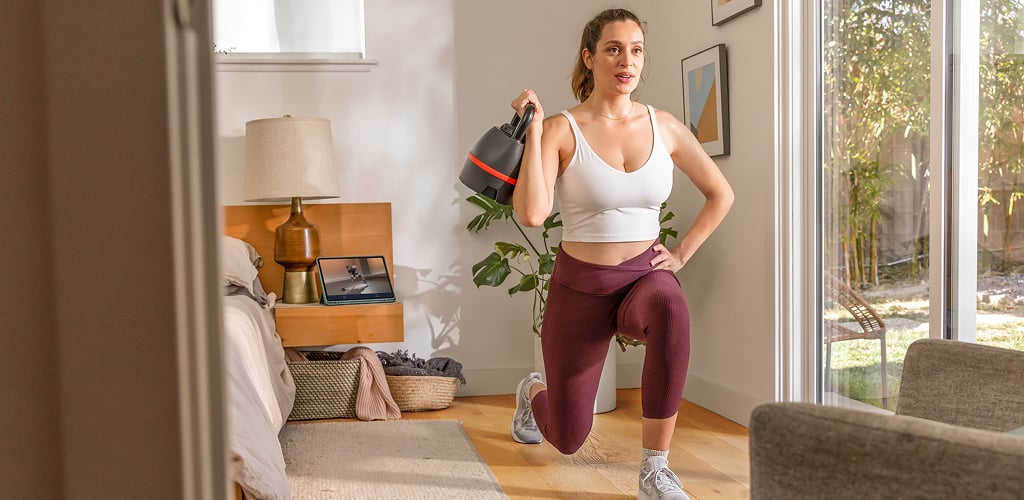Struggling to Stay Consistent? Here’s How to Build a Routine That Sticks

If you've ever started a workout routine only to see your motivation fade after a few weeks, you're not alone. Staying consistent is one of the biggest hurdles many of us face on our fitness journey.
But here's the good news: it no longer has to be. With the right mindset and time-tested strategies, you can create a routine that's built to last. Check out these tips from Amy Schemper, BowFlex Fitness Advisor and Certified Personal Trainer, who has helped countless clients build sustainable fitness habits.
Why Consistency Feels So Difficult
There are many reasons it's hard to find consistency in our fitness routines, but Amy says setting unrealistic expectations tops the list.
"People often go too hard too fast, scheduling workouts without recovery days or starting with workouts beyond their fitness level, which can result in burnout, excessive soreness, or injury."
On the flip side, Amy points out that lack of planning can create its own challenges. Without a plan, it's easy to skip workouts or stop altogether.
Finally, approaching fitness with an all-or-nothing mindset can derail progress. "You may start strong with a four-week program or a new class at the gym," Amy explains. "But the moment you encounter a change in schedule, an illness, or a busy work week and miss a workout or two, you might decide to quit altogether."

What Consistency Actually Looks Like
While it's tempting to think of consistency as never missing a workout, Amy encourages a different perspective.
"A consistent routine is sustainable and realistic," she says. "Too often, we think of consistency as a certain number of days per week, or crossing off workouts on a calendar, or following a program exactly."
A routine that fits your lifestyle and can flex with work and family obligations is the one that lasts. "You want a routine that will enable you to adapt or adjust as things change, without adding additional stress to your life."
Tip 1: Use Workout Snacks to Incorporate Movement Throughout the Day
If you're just getting started, committing to long sessions in your home gym several times a week may not be realistic.
One of Amy's favorite strategies is to incorporate 'workout snacks' throughout the day, which have been shown to improve aerobic fitness and strengthen your muscles.
"I love 10-15 minute movement sessions that give me an energy boost and add some cardio and strength to my day," she explains. "Workout snacks can be the first thing in the morning, during your lunch break, or when you need an afternoon pick-me-up."
A short dumbbell or kettlebell circuit, or even a quick bodyweight workout, can help you build consistency. Try these workout snack ideas:
If you have just a few minutes... complete a bodyweight circuit of jumping jacks, bodyweight squats, and lunges, alternating between 40 seconds of work and 20 seconds of rest between exercises.
If you have 10-15 minutes and a set of dumbbells... complete a circuit of deadlifts, standing overhead presses, reverse lunges, bent-over rows, and farmer's carries, alternating between 40 seconds of work and 20 seconds of rest between exercises.
If you prefer cardio... hopping on a treadmill, elliptical, or indoor cycling bike for 5-10 minutes can quickly boost your energy and get your heart pumping.
Bonus tip: set an alarm to remind you to get up from your desk for a workout snack, or schedule movement breaks into your calendar.
Tip 2: Make it Social
If you're lacking motivation to prioritize fitness on your own, you may want to consider enlisting support.
"Schedule a walk or a hike with a friend instead of coffee, or try a new class with your partner," Amy suggests.
You can also create an accountability group with friends or family members who share similar goals; simple check-ins can go a long way toward keeping everyone on track.

Tip 3: Prioritize Strength Training
Strength training isn't just about building muscle; it's also one of the best ways to support long-term consistency.
Short on space in your home gym? Compact gear like adjustable dumbbells and kettlebells saves space and lets you progress without needing to buy additional equipment. For more variety, consider an all-in-one home gym system to recreate your favorite gym workouts at home.
"Strength training gives you visible progress to celebrate—whether that's lifting a heavier weight, doing more reps, or simply feeling stronger in everyday life," Amy says. "It's that sense of accomplishment that keeps you motivated to stick with your routine."
Tip 4: Keep Cardio Accessible
Sometimes factors out of our control, like the weather or scheduling challenges, can derail even the best intentions. Having a solid cardio option (or options) at home, like a treadmill, elliptical, or indoor cycling bike makes squeezing in consistent movement much easier.
"With at-home cardio, it's easy to jump on for a quick session," says Amy. "You don't always need a full hour; even shorter workouts can build endurance, boost mood, and support heart health."
Craving variety? With the rise in popularity of workout modalities like hybrid training, you can pair cardio with strength training to mix up your routine and create a balance that's easier to sustain over time.

Tip 5: Don't Skip Your Recovery
One of the most overlooked factors in consistency? Rest.
"In a fitness culture that glamorizes 'No days off' and 'Never miss a Monday,' it's important to remember that rest is part of the process," Amy says. "Our muscles repair and develop during rest days, and getting adequate recovery allows us to return to our workouts refreshed and ready to push hard."
Sleep and nutrition also play vital roles. Amy recommends prioritizing 7-9 hours of sleep per night for muscle repair and stress management, and focusing on protein and fiber intake, as well as hydration. "Focus on what you can add, rather than what you should restrict," she adds.
Staying consistent with fitness isn't about achieving perfection — it's about finding a routine that fits your life, allows for flexibility, and keeps you moving forward toward your goals.
Whether you're just getting started with strength training or rediscovering your motivation to move, remember that progress comes from showing up, again and again, in ways that work for you.
Get workout inspiration, wellness tips, and the latest deals sent to your inbox.
The content on this blog is for informational and entertainment purposes only and should not be considered medical advice. This information is not a substitute for professional medical diagnosis, treatment, or advice. Always consult with your physician or another qualified healthcare provider before beginning any new exercise program, making changes to your fitness routine, or if you have questions about your health.
You may also like:
The Ultimate Treadmill Buying Guide for Runners & Walkers

